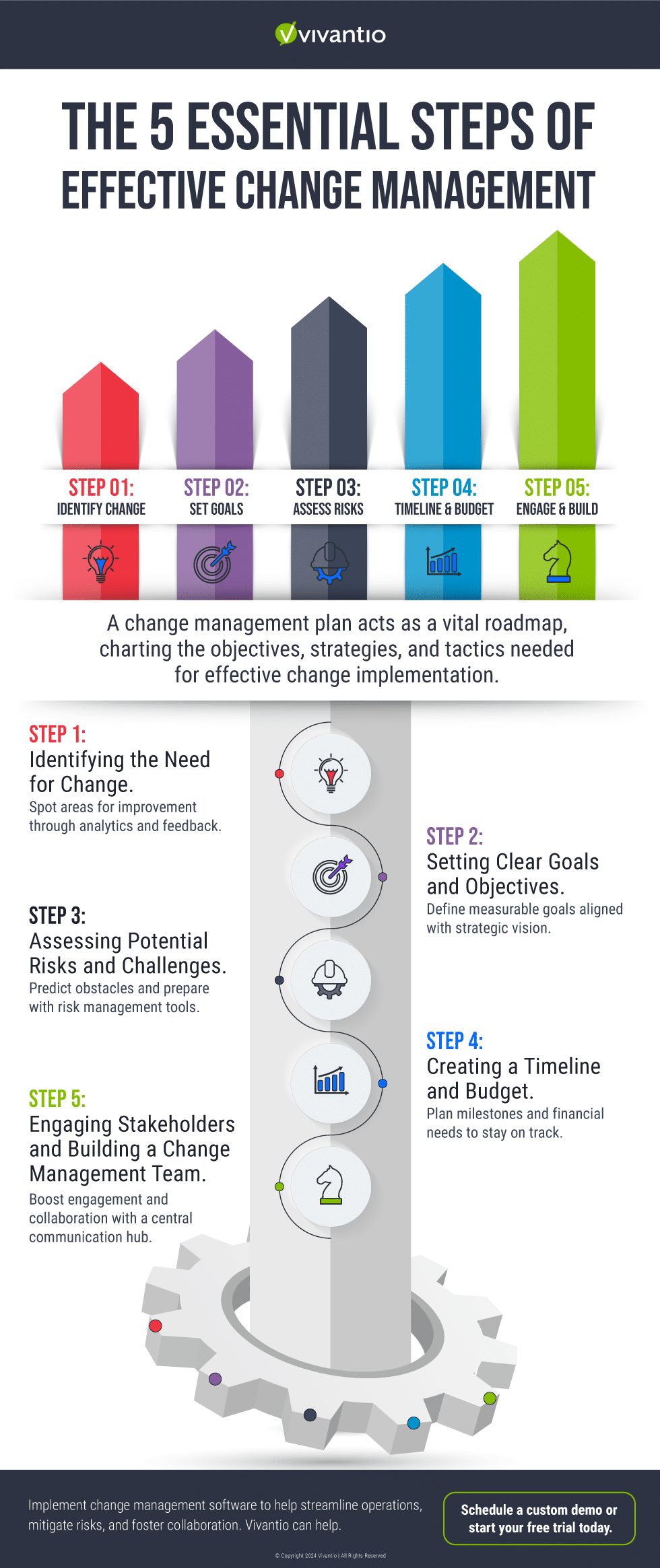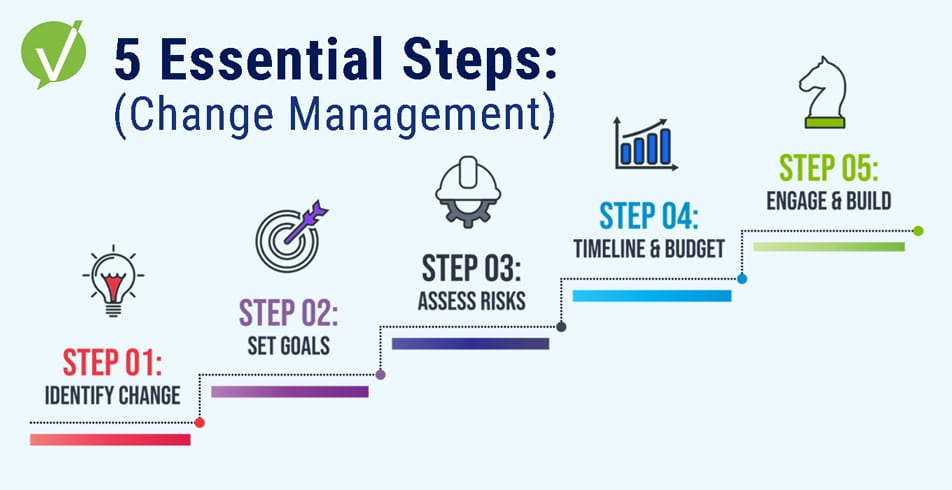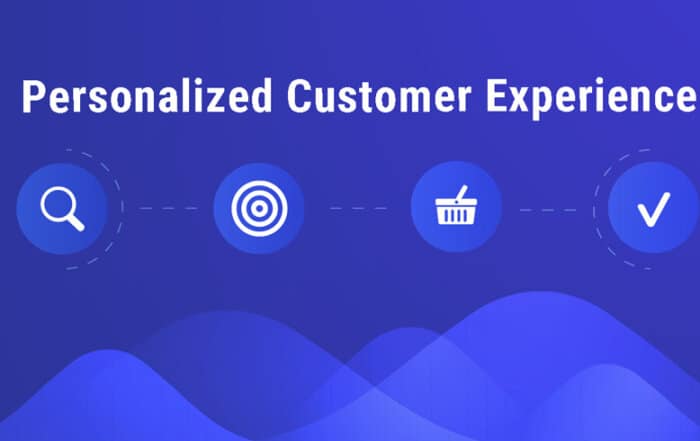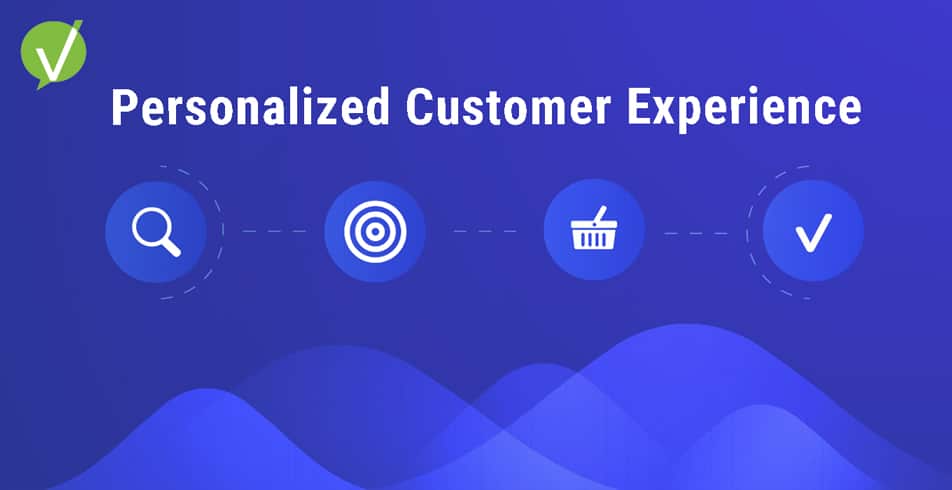An Effective Change Management Process: 5 Essential Steps
Introduction
Organizations must adapt to stay competitive. However, implementing change effectively can be a complex task. That’s where the change management process comes in. By following a structured change plan, your company can navigate through change smoothly and ensure your successful evolutions.
Managing change involves more than just making adjustments. It requires a clear understanding of why change is necessary and a well-defined plan to manage it. In this article, we will explore the five essential steps involved in the change management process to help you effectively implement change management within your organization.
Developing a Change Management Plan: 5 Critical Steps
Successfully navigating through change requires meticulous planning and execution. A change management plan acts as a vital roadmap, directing organizations on how to move smoothly through the transition. It spells out the objectives, strategies, and tactics needed for effective change implementation. The advent of change management software has revolutionized this process, offering tools that enhance communication, collaboration, and the overall management of change initiatives. Here’s how integrating change management software into the process can be beneficial:
- Identifying the Need for Change: Utilizes analytics and feedback mechanisms to pinpoint areas requiring improvement or adaptation.
- Setting Clear Goals and Objectives: Facilitates the establishment of measurable and attainable goals, aligning them with the organization’s strategic vision.
- Assessing Potential Risks and Challenges: Employs risk management modules to predict and prepare for potential obstacles, ensuring readiness for any scenario.
- Creating a Timeline and Budget: Offers project management tools to outline key milestones, deadlines, and financial requirements, keeping the change project on track.
- Engaging Stakeholders and Building a Change Management Team: Serves as a central hub for communication, enhancing stakeholder engagement and team collaboration through real-time updates and transparency.
The integration of change management software into the change management plan is not just a strategic move; it’s a transformational one. It bridges gaps, enhances stakeholder engagement, and provides a structured approach to managing change. With its ability to streamline processes, mitigate risks, and foster a collaborative environment, change management software is indispensable in achieving successful change implementation. By leveraging these digital tools, organizations can ensure that they not only survive but thrive in the ever-evolving business landscape.
Implementing New Change with a Structured Approach: Mock Case Study
When organizations neglect to adopt a structured approach to managing change, the consequences can be dire. Consider, for example, the mock company, TechAdapt Inc., that faced significant challenges due to rapid technological advancements. Without a structured change management plan, the company attempted to implement new software to stay competitive. However, due to the lack of clear communication, employee resistance soared, and the implementation was inconsistent and fraught with errors.
The result was a significant decline in productivity and customer satisfaction, leading to a noticeable drop in market share. In contrast, competitors who embraced structured change management not only implemented new technologies more smoothly but also capitalized on the market opportunities that TechAdapt Inc. missed.
To prevent scenarios like that of TechAdapt Inc., it is crucial for organizations to adhere to the following key components of structured change management:
- Recognizing Different Types of Change: Understanding whether the change is due to technological advancements, organizational restructuring, or shifts in market demands allows for tailored strategies, ensuring smoother transitions.
- Implementing a Change Management Plan: A detailed plan acts as a roadmap, specifying the steps and resources needed for successful change. This clarity prevents chaos and aligns all stakeholders, reducing resistance and fostering collaboration.
- Appointing a Change Manager: This individual spearheads the change, serving as a bridge among teams, departments, and leadership. They play a critical role in communicating the need for change, motivating employees, and ensuring the plan’s successful execution.
Organizations that bypass these steps often experience chaos, increased resistance, inconsistent change implementation, and poor communication, leading to operational inefficiencies and financial losses. In contrast, organizations that embrace a structured approach to change management benefit from clarity, enhanced employee engagement, consistent and efficient change execution, and effective communication, positioning them for success in an ever-evolving business landscape.
By learning from the missteps of TechAdapt Inc., it becomes evident that a structured approach to change management is not merely beneficial but essential. It minimizes disruption, secures employee buy-in, and significantly increases the likelihood of successful change implementation, safeguarding the organization’s future.
Understanding the Role of Project Management in Change Initiatives
Project management follows a change model and plays a vital role in change initiatives, providing a framework for planning, implementing, and monitoring change. It involves identifying stakeholders, assessing risks, and developing strategies to manage potential challenges.
By utilizing project management principles, organizations can effectively navigate normal change, emergency change, and future change. Project managers bring expertise in managing diverse resources, coordinating activities, and ensuring that change initiatives align with organizational goals and objectives.
The Benefits of Change Management
Effective change management is crucial in guiding organizations through the process of change. A successful change management process provides a structured approach to implement and sustain change, minimizing resistance and maximizing employee engagement.
A well-executed change management plan ensures that change is embraced and integrated into the organization’s culture, processes, and systems. It fosters a sense of ownership and drives commitment among employees, resulting in a smooth transition and improved organizational performance.
Change Request |
Effective Change Management |
Change Initiative |
Project Management |
|---|---|---|---|
| Initiated by various stakeholders to drive improvement and modification | Ensures a structured approach to manage change and maximize outcomes | Coordinates goals, timelines, resources, and monitors change progress | Provides a framework for planning, implementing, and monitoring change initiatives |
| Identifies opportunities for growth and development | Minimizes resistance and maximizes employee engagement | Fosters a sense of ownership and commitment among employees | Ensures change aligns with organizational goals and objectives |
Monitoring and Evaluating Change Progress
In order to ensure the effectiveness of your change management process, it is crucial to monitor and evaluate the progress of your change initiatives. This allows you to assess the success of your strategies, make necessary adjustments, and ensure that your organization is moving in the right direction.
The Importance of Change Management Models
Implementing a change management model can provide structure and guidance throughout the change process. There are several change management models available, each with its own unique approach and focus. Here are a few popular change management models:
- ADKAR Model
- Kotter’s 8-Step Model
- Lewin’s Change Management Model
By selecting and implementing a change management model that aligns with your organization’s goals, culture, and resources, you can create a structured framework for managing change effectively.
Change Management Model |
Key Focus |
Strengths |
|---|---|---|
| ADKAR Model | Individual change and adoption |
|
| Kotter’s 8-Step Model | Leadership and organizational change |
|
| Lewin’s Change Management Model | Unfreeze, change, refreeze |
|
Adapting and Sustaining Change
Once you have implemented a change within your organization, the journey doesn’t end there. Adapting and sustaining change is a crucial step in successful change management. It involves embracing new changes and utilizing them effectively to drive long-term growth and improvement.
One key aspect of adapting to change is the ability to embrace and welcome new ideas and initiatives. By being open to new changes, you create an environment that encourages innovation and fosters continuous improvement. Embracing change means actively seeking opportunities to use change as a catalyst for positive transformation.
To sustain change, it is important to build a strong change management team. This team comprises individuals who are knowledgeable, adaptable, and have the skills to manage the complexities of change. A successful change management team not only guides the implementation process but also supports employees through the transition, ensuring a smooth and seamless integration of the new change.
Your journey towards implementing change in a sustainable and long-lasting manner requires a systematic approach. Let Vivantio be your partner in establishing processes and frameworks that enable your organization to adapt and evolve as changes occur. Our expert team can help you achieve a seamless transition and propel your organization towards its ambitious goals. Schedule a demo to discuss your unique needs, and discover how Vivantio’s powerful solutions can empower your business.














